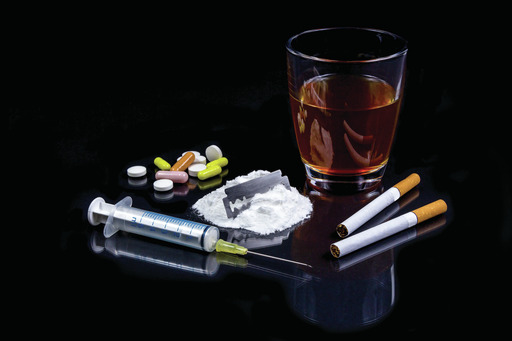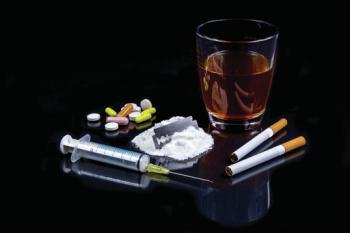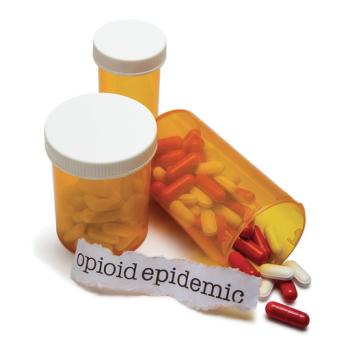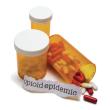Saving lives from opioids
Opioid overdose has been on the rise in Maine. In 2017, there were 417 opioid related deaths, higher than any other state. Two years later, in the first three quarters of 2019, when there were 277 deaths, 246 (89%) of the lives were claimed by accidental overdoses, 27 (10%) were suicides; and four (1%) were due to an undetermined manner of death. These numbers are from the Attorney General’s and Chief Medical Examiner offices.
By the end of the first three quarters of 2020, 380 people died of drug overdose. Of these, 83% of the deaths were caused by at least one opioid, frequently non-pharmaceutical fentanyl; and 81% were caused by two or more drugs; other drugs include heroin and meth, according to the same two offices and a Jan. 11 report compiled by Dr. Marcella Sorg and Dr. Kiley Daley of University of Maine's Margaret Chase Smith Policy Center.
Maine’s Director of Opioid Response, Gordon Smith, said the top five strategies are leadership, prevention – provide education/training, overdose rescue/availability of naloxone; a media campaign, overdose mapping; and treatment – focus on pregnant women, infants and incarcerated people; and recovery support – recovery residences, recovery-friendly jobs, recovery coaches, recovery centers, recovery-ready communities and fighting the stigma borne by those in recovery.
People in the early stages of recovery need a lot of support – housing, nutritious foods, counseling and, when possible, jobs. Smith said more recovery centers and residences in Maine; recovery-ready communities, counselors for recovery support, treatment – before and during recovery – and prevention education are also needed in the state.
Stigma is part of the problem for those using and those in recovery. Smith said he hears this all the time. “It’s part of building that recovery-ready community, of building out a system to adequately treat substance disorder.”
Community resources also need to include work opportunities. “We are building relationships with employers. Before the pandemic we were having job fairs just for people in recovery … there were more jobs than there were people to fill them.”
Work is being done to increase the number of recovery, residential treatment and rehab centers, housing for the homeless, mental health needs, jobs and removing the stigma – all critical pieces. Now, through the state’s OPTIONS program, mobile response teams of behavioral health specialists are in every county to help drug and/or alcohol users find the treatment services they need.
Some treatment facilities do not accept people being treated with suboxone (buprenorphine and naloxone) to treat opioid and other narcotics to slowly wean them off their addiction dependence. Some of these facilities are not full and this restriction does not help. But Smith said he can understand the thinking. He visits the treatment and residential facilities and has learned that, for some people in recovery, knowing another patient is under the same roof can trigger the desire for using.
To address this issue and encourage more facilities, work is underway to offer state funding. To receive the funds, facilities would have to accept people taking suboxone or other medication while in recovery.
Smith visits treatment and residential facilities to talk about the programming at each one and its track record: Does the facility follow up on patients three, six and 12 months after the program is completed? If they are not keeping track, how do they know if what they are doing is effective? The answers to treatment and recovery are in the data.
Facilities and programs for men are few and far between, said Smith. There are a couple in Portland, but even if they have openings, these facilities will not take in a young man on soboxone.“We need more facilities (for all) and we need to be strategic about where they are located, and aggressive about their quality,” Smith said. “Nothing bothers us more than to find out the program someone has gotten into wasn’t one of quality.”
Mental illness, which includes anxiety and depression, plays a major role in substance abuse as people self-medicate. For some, it is because they lack insurance to cover medical costs; and many with insurance coverage continue their self medication(s) of choice in combination with prescribed meds. Since Gov. Janet Mills’ executive order for Medicaid expansion, there are now over 10,000 people receiving substance treatment and about the same number are being treated for mental illnesses.
“We believe that every life has value. And we find it completely unacceptable for so many people to be in harm’s way or be in danger of a fatal overdose,” said Smith. “We realize that for every fatality there are dozens of people that are being saved from opioid overdose with Narcam (the brand name of the generic form of naloxone). But it’s that person who was saved today that is at the most risk of dying next week. We will use all the resources we have to keep people alive.”
Long-term work on prevention starts with education. Smith believes teaching children through school-based programming about the dangers of addiction is key. He works with Mary Herman, a special consultant to the Department of Education, in this facet of the top five strategies.
In January 2020, the Maine Legislature appropriated $3.5 million for two years from Fund for Health Maine for opioid prevention. These monies were for funding prevention education, syringe exchange, curriculum development and training assistance to substance-effected infants and their mothers and families.
And just last week, Senators Susan Collins and Angus King announced $1,461,282 had been allocated to Maine to help hospitals, health centers and care delivery partners combat the opioid crisis. The announcement specified, “to establish and expand access to integrated substance use disorder and mental health services for pregnant and postpartum women.” Funding was awarded through the U.S. Department of Health and Human Services to Maine Department of Health and Human Services’ (MDHHS) Maternal Opioid Misuse ModelMaine Maternal Opioid Model (MaineMOM).
Smith said this allocation “is a portion of a MOM (Maternal Opioid ModeL) grant announced over a year ago. The first pregnant moms will be enrolled in July 2021 and the purpose is to promote and implement integration of obstetrical care with comprehensive substance abuse treatment, particularly medical assisted treatment (MAT).”
Help and treatment for substance-effected infants and their mothers is also a major part of both the educational and treatment focus of the state’s opioid response. Smith said a lot of the people he talks to who are in recovery were introduced to drugs by their parents or other family members by age 11 or 13. And in one case, the person was just 8 or 9.
“I believe there’s something to be learned from every case. It’s important to listen to the people hear their stories, find out what their needs are,” said Smith.
Meanwhile, county statistics for January to September 2020 noted increases in Androscoggin, York and Penobscot counties. The largest increases in fatalities per capita were in Washington, Piscataquis, and Penobscot. The only counties that did not see an increase in accidental overdose deaths were Lincoln, Cumberland and Sagadahoc, according to maine.gov
Smith and Attorney General Aaron M. Frey are working on releasing the overdose numbers to the public monthly. “It’s not lost on people how many have died of COVID-19, so why can’t we do that with accidental OD? We want to do this because we want the public to be more engaged with us on this subject.”
The current numbers of overdoses are not solely due to opioids; stimulants such as methamphetamine, cocaine and crack figure into the cases involving poly-substances. This is an example of why data is so vital. For example, if the data Smith sees based on arrests, seizures and reports from treatment facilities – that stimulants were responsible for accidental overdoses, then distributing Narcam throughout the state won’t help.
“It’s a moving target,” said Smith. “We have a data-sharing committee on the verge of bringing a statewide data hub with 25 sources of drug-related data to fruition. It’s taken a full two years to bring all of the people together. I need people who are data analysts to help me understand it. It’s the data that drives policy. It’s frustrating. We are not happy with these overdose numbers.”
The effect of the pandemic on these accidental drug overdose numbers was acknowledged by Frey after reviewing the second quarter reports last summer. In a press release, he wrote, “It is clear from the data that the increase in deaths from the opioid epidemic can be partially attributed to the increased isolation of living through the pandemic … We have to ensure that Mainers who are struggling with substance use disorder are connected with the resources they need to protect them and help them advance in recovery.”
“People are self medicating – the pandemic is an anxiety-ridden time even for those of us who are not using substances,” Smith said. “Recovery is all about connection. Imagine what it’s like for someone in recovery who’s been cut off from their 12-step program. Imagine you’re someone still using and now your supply has been impacted. They are already feeling isolated and alone.”
If you or someone you love is struggling with addiction, Smith recommends calling 211. A live person will help you find the help you need. Ask for addiction services.
“People are there to help. They are not alone,” said Smith. “More people are dying because they are using drugs alone … and drugs are more dangerous now than ever.”
For a listing of facilities near the Boothbay region visit https://findtreatment.gov/results. The site has a box to enter in your ZIP code – then all substance detox and recovery facilities will be listed. And that information is complete – from the type of services to payment options.
Event Date
Address
United States








































